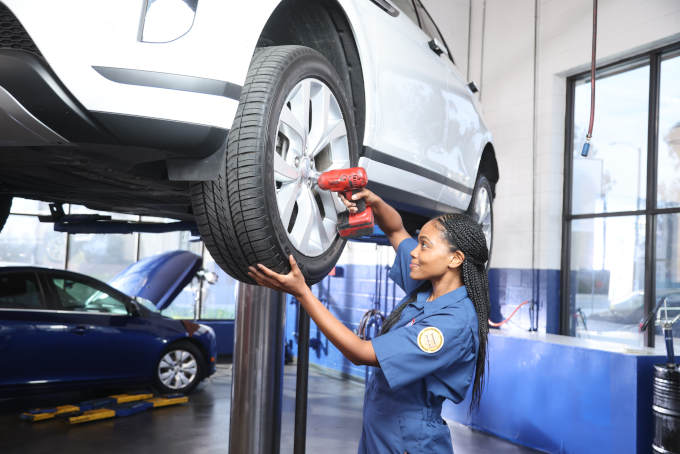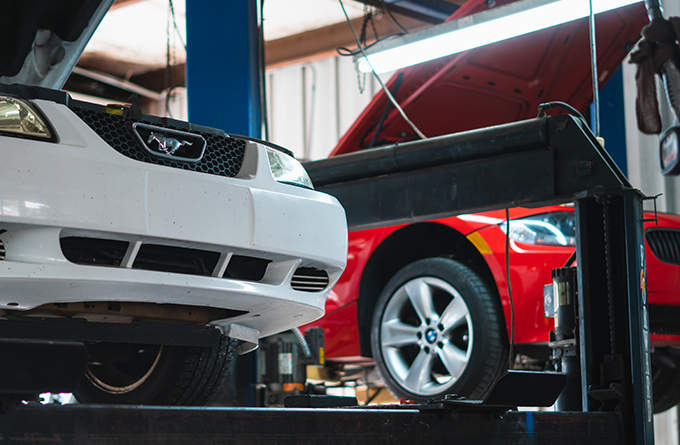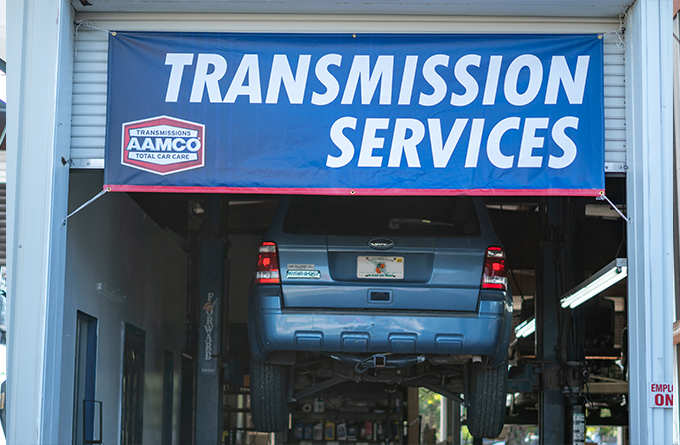We drive our vehicles often without really thinking about the impressive systems that allow them to function. When we press the brakes, we have full confidence that our vehicles will respond. However, we often don’t think about the inner workings of the components of our vehicle’s brakes. In this article, we will take a look at how brakes function and the anatomy of brake repair.
Before we discuss how brakes work, it is first important to cover the various components of a vehicle’s brakes.
Rotors. You’ll sometimes also hear these referred to as discs. These parts of your braking system rotate with the wheels of your vehicle. They are critical for stopping your vehicle through the use of friction.
Calipers. Calipers hold the brake pads, brake pistons, and brake fluid. They operate much like a clamp that puts pressure on the rotors. Typically, the calipers do not need to be replaced during regular maintenance.
Brake Pads. Your brake pads will need to be replaced the most often. These rest in the calipers on your vehicle and are pressed against the rotor to generate friction. There are different types of brake pads that will last various amounts of miles depending on their composition and your driving habits.
Brake Pistons. Pistons are housed in the caliper and push against the brake pads to create the friction that is used to stop your vehicle. There are typically one or two pistons per brake.
Brake Lines. Brake lines are tubes that connect brake fluid from the master cylinder to the wheels. They are typically made from rubber and stainless steel. These often last the life of your vehicle.
Brake Fluid. Brake fluid is the critical part of the system that provides the necessary pressure to stop your vehicle. Without brake fluid, the system would not function at all. This fluid can withstand the high temperatures created by the pressure and friction of vehicle braking
How Do Brakes Function?
We all know the basic concept. You press your foot down on the brake pedal in your vehicle and your vehicle will respond by stopping. After all, your foot doesn’t apply much force yet it is able to stop a vehicle weighing thousands of pounds fairly quickly.
What causes this to happen? The answer is hydraulics.
When you press the brake pedal, this force is transferred to the brake fluid via the hydraulic process. During this process, the force you apply with your foot is multiplied. A master cylinder operates the hydraulic circuits within the brake system. This cylinder transmits this pressure through your brake system via the brake fluid.
This fluid then puts pressure on the piston in the caliper. The piston presses against the brake pad, pushing it into contact with both sides of the rotors. Remember that the rotors are turning with the wheels of your vehicle. When the brake pads press against the rotors, this causes friction that transfers the force to the tires and tires to the pavement, ultimately stopping the vehicle.
The Anatomy of Brake Maintenance & Repair
Keeping your brakes functioning involves staying on top of brake maintenance and acting swiftly when your system needs brake repair. Regular maintenance of your braking system is important and there are a number of items that will be completed during the check.
Check Pads and Rotors
The most important part of regular brake maintenance is to check the status of your brake pads and rotors. The friction from their interaction will wear the pads down over time and can also cause damage to the rotors if you wait too long causing a metal-to-metal contact. Depending on the status of each, brake repair can include replacing your pads and replacing the rotors. Inspection and maintenance of your calipers and caliper mounting slides and hardware is also critical for a safe operating brake system that does not chatter, squeal or pull to one side or the other. If the calipers pistons become difficult to move in the caliper bores or show signs of leakage or boot damage, this will necessitate replacement and bleeding of the system. Many manufacturers also incorporate the parking brakes within the rear caliper pistons and bores, and it requires special tools and, in some cases, computerized equipment to retract the pistons to exchange the pads.
Flush Brake Fluid
Brake fluid is incredibly important as the source that transfers power from your foot to the calipers. It should be checked routinely, typically every 25,000 miles, and completely exchanged periodically according to your owner’s manual or if unspecified by your owner’s manual at every brake pad change. Keep an eye on the brake fluid, if it becomes low, it could be an indicator that your brake pads are getting low or worse, you have a hydraulic leak.
Bleed Brake Lines
If air becomes trapped inside your brake lines, it is important to discover why this has happened since it typically is caused by a leak in the hydraulic system or a master cylinder going bad. Have the system repaired professionally and they will also remove the air that will drastically decrease the efficiency of your brakes and the speed at which your vehicle stops. As such, bleeding the brake lines is a common part of brake maintenance that is typically done with every complete brake fluid exchange.
Final Thoughts
The issues listed above are some of the most common brake services; several of these issues can necessitate repairs in your vehicle's brake system. The effectiveness of your brakes is influenced by the quality of parts, frequency of maintenance, and your own driving habits. If your vehicle is taking longer to stop or making grinding noises when you apply the brakes, it is definitely time to have your brakes inspected by a certified automotive technician at your local AAMCO.











